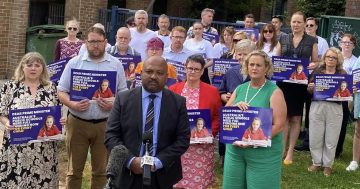
NSW saw a decrease in teaching vacancies for the first time in more than a decade, leading to 460 fewer job listings in January 2024 compared to January 2023. Photo: Pru Car.
The teacher shortage has long been an issue in NSW, but according to new statistics from the NSW Government, there has been a considerable fall in job vacancies.
The number of teacher job vacancies for schools in NSW for Term 1 decreased by 20 per cent compared to this time last year with 1782 positions listed for January 2024 compared to 2242 in January 2023.
The significant fall in vacancies is even more pleasing in regional and rural areas of the state as listings dropped from 1241 in 2023 to 938 in 2014, almost a 25 per cent decrease.
The start of the 2024 school year saw 6261 teachers appointed to their first permanent role with the Department of Education, a massive increase of 4575 on the figure recorded at the same time last year.
Deputy Premier and Minister for Education and Early Learning Prue Car said it was encouraging to see vacancies falling, but admitted there was still work remaining.
“To see vacancies trending in the right direction – downward – is encouraging,” Ms Car said.
“We still have a lot of work to do to turn around the shortage, and addressing teacher vacancies remains a key priority for the government.
“These figures affirm our decision to deliver a once-in-a-generation wage rise to NSW public school teachers, along with our focus on easing teacher workload and improving student behaviour.”
Ms Car said getting permanent, well-paid teachers into classrooms was one of the State Government’s top priorities that would pay dividends down the line when it came to academic outcomes for NSW students.
“While these are positive numbers, the experience of teachers on the ground is critical,” Ms Car said. “That’s why I will continue to listen to our teachers and their real concerns about staff shortages.
“These initiatives are underpinned by a desire to restore respect for the teaching profession and let our school staff know we value the work they do every day in educating our children.”
The NSW Government said it was also committed to giving more temporary teachers and support staff permanent roles and reducing the excessive administrative workload on schools.
















